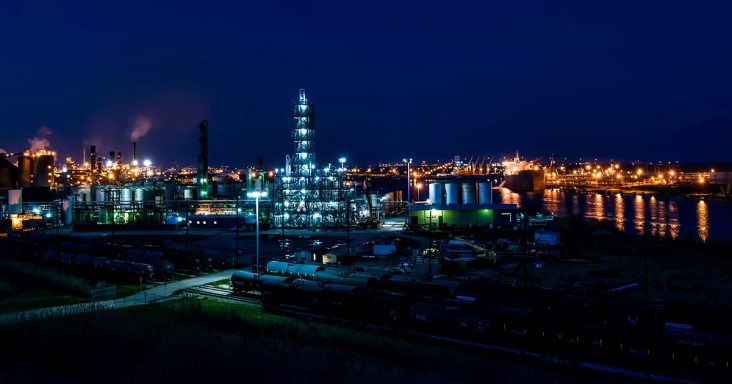Petroleum refining capacity, distillate inventories decline
by December 11, 2020 10:28 am 619 views

Port Arthur, Texas, courtesy David Mark/Pixabay.
U.S. petroleum refining capacity has decreased to its lowest level since 2016 as U.S. distillate inventories have fallen to their previous five-year average (2015-19), according to the U.S. Energy Information Administration (EIA).
As of Sept. 1, the United States had 18.4 million barrels per calendar day of petroleum refining capacity, also known as operable atmospheric crude oil distillation capacity, according to EIA’s most recent data available. The capacity rose to a record high of nearly 19 million barrels per calendar day earlier this year, but several refineries have closed. Since then, capacity has declined to the lowest level since May 2016.
Operable refinery capacity is the amount of capacity that is in operation or could be brought into production within 90 days. From April to May, operable refinery capacity fell by 335,000 barrels per calendar day after the Philadelphia Energy Solutions refinery in Pennsylvania closed. Operable capacity fell another 19,000 barrels per calendar day in June when Marathon’s refinery in Dickinson, N.C., closed to be converted to a renewable diesel plant.
Recently, three refineries closed in Wyoming, California and New Mexico:
- HollyFrontier shut all units as of the end of August at its 48,000 barrels per calendar day refinery in Cheyenne, Wyo. It stopped petroleum refining operations but plans to resume operations in 2022 as a renewable diesel processing plant.
- Marathon announced plans in August to shut two facilities, including the 161,000 barrels per calendar day in Martinez, Calif., and the 27,000 barrels per calendar day in Gallup, N.M. Marathon attributed the closures to reduced petroleum demand in 2020. In October, the company announced that it is evaluating plans to covert the Martinez refinery to a renewable diesel facility.
As of the week ending Nov. 13, U.S. distillate inventories declined to 143 million barrels and are within the previous five-year range for the first time since May 8. The inventories reached 180 million barrels in late July, or 3% less than in December 1982, the largest U.S. inventory in EIA’s data, which go back to 1982.
Distillate inventories started the year near the bottom of the five-year range and fell lower than the range in March and April. Distillate inventories increased as the U.S. economy responded to COVID-19. From late May through mid-September, inventories were higher than 174 million barrels. Since mid-September, inventories have been decreasing to be within the five-year range.
U.S. demand for distillate has been rising since it reached an annual low in May. The rise in demand for distillate fuel has contributed to the recent decline. As of the week ending Nov. 20, distillate demand rose to 4.2 million barrels per day, similar to the previous five-year average for this time of the year.
Distillate demand has been rising from trucking and railroad industries, while refineries have been making less distillate fuel, which includes diesel fuel and fuel oils. Gross inputs into refineries reached 14.2 million barrels per day as of Nov. 20, or 14% lower than the previous five-year average for this time of the year. Distillate yields, or the ratio of distillate fuel production to refinery inputs, have declined since reaching a record high of 38% in April. It recently was 31% in the week ending Nov. 20, which is near the previous five-year average for this time of the year.
